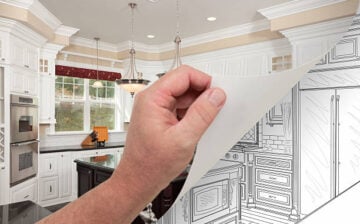
Owning a house in a decent place is a dream for everyone. Especially for people who’re living as tenants and have to follow all the rules of the landlords, they understand how significant it is to live in one’s own home. Home ownership is also a symbol of stability and financial success. It’s because it takes a sizable amount even to pay the down payment for the house. But, buying a home isn’t easy since it involves such a huge investment. People are unable to save that much to qualify for the down payment due to innumerable reasons. Sometimes people don’t qualify for a property loan due to low credit scores. So, for various reasons, the goal of home ownership is dashed. This scenario is becoming common these days. Because the cost of living has been increasing incessantly, many people are unable to save a large portion of their earnings. This is why rent to own programs are a great opportunity for these people. It’s a traditional process of renting a property wherein the owner provides an option to buy the same property within a specific period of time. A lot of people still don’t grasp the underlying meaning and benefits of these rents to own home programs. So, let’s take a look.
The Process of Rent to Own Homes
A rent to own program is a great option for buying the property, especially for those who don’t have enough money to make a down payment to own a home. However, anyone who is looking for rent to own homes in Ontario, or any other place, should be aware of the entire process. It’s an agreement between the buyer and the seller where the buyer agrees to pay the rent for a specific period of time prior to gaining ownership. The time period can be mutually decided based on a lot of factors. The process is conducted in five steps like the following:
-
Purchase Price:
Prior to signing the rent to own agreement, it’s important for both parties to set the purchase price. The price can be decided based on a lot of factors, including the current value of the home, market prices, seller’s preferences, etc. In some cases, the purchase price is determined when the lease expires, based on the property’s market value at that time. But sometimes the renter would like to agree on the purchase price in advance, if homes in the area are increasing in price.
In many rent-to-own arrangements, the buyer also pays the seller a one-time, usually nonrefundable fee called the option fee. This fee is what gives the renter the option to buy the home in the future. Typically the fee is one percent to five percent of the purchase price, but can be negotiated between the buyer and seller.
Also note there are different types of rent to own agreements. Lease-option contracts give the renter the right, but not the requirement, to buy the property at the end of the lease. Lease-purchase contracts legally require the renter to buy the property at the end of the lease, even if they cannot afford to. You may want to have a qualified real estate attorney review any contract before you sign, so you know exactly what type of agreement you have.
-
Rent Amount:
The part of the contract involves the buyer to pay the rent for a specific period of time. Typically the rents are higher than the normal rent prices in that area, as a percentage of the payment is saved for the future purchase. The agreement will specify how much of each rent payment is applied to the purchase price.
-
Maintenance:
Sometimes, the owner wants the buyer to maintain the property even while he is living as a tenant. Usually, maintenance is the landlord’s responsibility; this is why it’s important to carefully read the entire contract. Ensure the contract explicitly states who is responsible for which maintenance and repair tasks; mowing the lawn and raking the leaves is different from replacing a water heater or fixing cracks in the foundation.
So, prior to signing the agreement, it’s important to determine the maintenance cost, HOA fees, and property taxes during the rental. Also, the tenant should conduct a property inspection to know if there are any structural errors in the house. Also order an appraisal and make sure there are no tax issues with the home before signing any agreements. You’ll also need to know whether and how you could possibly lose your option to buy the property, for example for being late on any rent payments or failing to inform the seller in writing of your intent to buy.
Just like any rental, you’ll need to purchase renter’s insurance to cover your belongings on the property and provide liability coverage in case someone in injured while in the home.
-
Lease Term:
The lease term is decided mutually based upon a lot of factors. Once the lease ends the buyer can decide whether he wants to move forward with this purchase or not.
-
Closing Process:
The closing process is conducted once the lease term is ended. The buyer can decide whether he wants to purchase the property, or renew the lease until he is prepared for the final purchase.
The rent to own program is mutually beneficial for both parties. There are a lot of advantages to rent to own home programs. Let’s take a look at a few.
-
Minimum Cash Required:
Generally, in rent to own home programs, the buyer doesn’t need to pay the down payment, which is huge. The buyer only pays the monthly rent, out of which a portion is reserved for the future purchase. In this case, the buyer doesn’t feel burdened by a sizable upfront investment. Therefore, it’s a great option for buying property without getting insolvent.
Rent to own agreements are good for buyers who need to improve their credit scores and improve their financial standing while also getting a chance to purchase a home they want. The buyers get to build equity and benefit from price appreciation, even while they are renting the home. These agreements are also suitable for people who can’t or don’t want to get a mortgage, such as those who are self-employed or contract workers, and those who don’t have a U.S. credit history yet (such as foreign workers).
-
Secure the Purchase Price
Sometimes people tend to spend a large portion of the money they earn. Therefore, they are never able to save enough to pay the down payment for a house. But, in rent to own home programs, the tenant is obligated to pay the rent. The best part is that a certain amount of this money is saved for future purchase. However, it’s important to check the agreement mentions clearly that the property may be handed over after a certain period of time.
-
Quick Move-In
Generally, in rent to own home properties, the buyer doesn’t need to wait for a couple of months to move in like the conventional process. Once the lease ends, the buyer decides whether to move forward with the purchase or not. Within a week or two, the entire process is concluded, and the buyer can take ownership of the property. This is another great advantage of rent to own home programs. However, people should be careful when finding rent to own home programs. Sometimes people get scammed during this process and lose their entire savings. But, it is a great investment if one is vigilant enough to see through the loopholes.
When considering a rent to own agreement, it’s a good idea to research the property owner, particularly looking for any financial difficulties and how long the owner has owned the property.
We hope you found this blog post Complete Guide to Rent to Own Home Programs, useful. Be sure to check out our post 5 Pieces Of Legal Advice When Buying Your Own Home for more great tips!
Have Experience in the Moving Industry? Want an Additional Income Stream? Work With All Around Moving!
Partner with us and we’ll help you make money. Click here to learn more.





